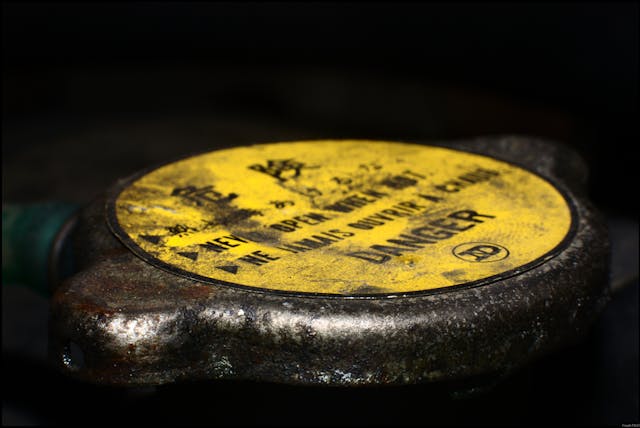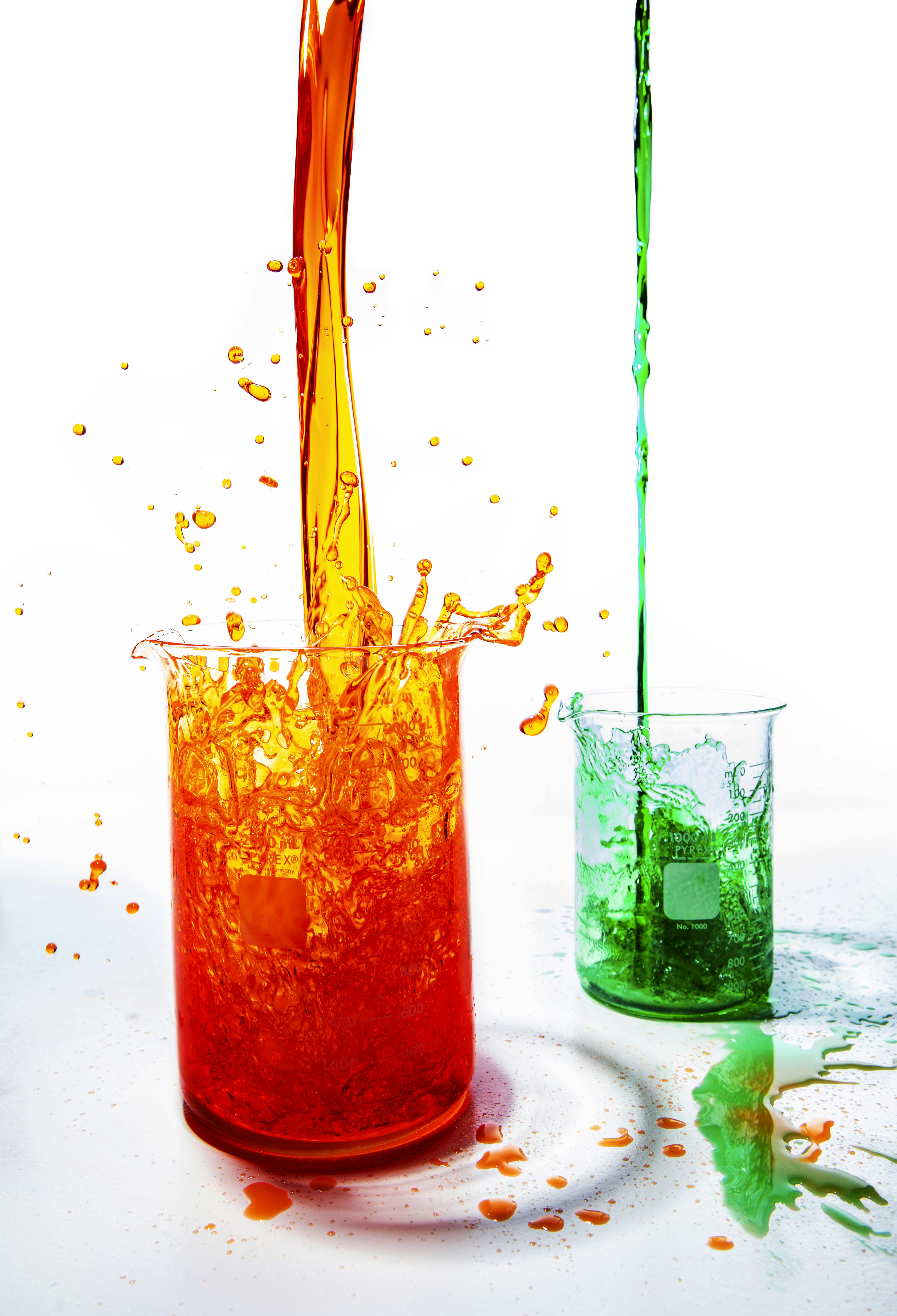Just Chill: Making Sense of the Coolant Conundrum
Have you walked into an auto parts store recently to buy antifreeze? The number of options and the color-coding on the containers is enough to make your head spin. When did everything get so complicated? Here’s what’s going on.
Antifreeze—more properly called engine coolant—serves two main purposes. First, it uses ethylene glycol to extend the operating temperature of water by both lowering the freezing point and raising the boiling point. Second, because ethylene glycol oxidizes and produces acids that corrode metal, coolant contains additives that prevent acid formation and inhibit corrosion. Back when nearly all engines had cast-iron blocks and copper radiators, silicate and phosphate were the go-to corrosion-inhibiting additives. That’s what was in the ubiquitous Prestone and Zerex green coolants many of us grew up with. The antifreeze capabilities of the glycol don’t really break down, but the corrosion inhibitors do, resulting in the coolant turning a murky, rusty brown. It’s for this reason that manufacturers recommended changing the coolant every three years or 36,000 miles.

As engine designs advanced from iron blocks and heads to aluminum, and as cooling systems began using radiators with aluminum cores, and water pumps with rubber seals, it was found that the silicates in coolant, particularly when mixed with mineral-heavy tap water instead of distilled water, reacted with aluminum to form scale that could clog the coolant passages, and that phosphates could reduce the life of rubber seals. In the mid-1990s, the industry moved toward long-life coolant that used a different anti- corrosion formulation where phosphate/silicate was replaced with organic acids. Although there were publicized issues with the first of these (GM’s Dex-Cool), the industry adopted these so-called Organic Acid Technology (OAT) coolants due to the lengthened service lifetimes.

This brings us to the abbreviations like OAT. They’re confusing because the nomenclature is built around labeling the corrosion-inhibiting chemicals as inorganic or organic, but this isn’t organic in the earthy-crunchy Whole Foods way; the coolant is in no way environmentally friendly. Further, most coolant is still made with ethylene glycol and thus is still highly toxic to animals; it’ll kill them if they lap it up. Propylene glycol–based coolant is available and is much less toxic, but it supposedly doesn’t cool quite as well as the much more prevalent ethylene glycol products. Note also that coolant colors listed below are dyes, not actual chemical colors, and thus do not represent a true industry standard. But here’s a summary:
Inorganic Acid Technology (IAT) refers to old-school green silicate/phosphate coolant. This is still the advised coolant if your car has a brass or copper radiator.
Organic Acid Technology (OAT) coolants replace the silicate/phosphate corrosion inhibitors with carboxylic acids like sebacate and/or 2-EHA (carboxylic acid contains carbon and is therefore organic). OATs are typically orange in color.
Hybrid Organic Acid Technology (HOAT, yellow) coolants typically improve corrosion resistance by adding some amount of silicate (Si-HOAT—blue, red, or pink) or phosphate (P-HOAT—green or purple) to the OAT mix. The European coolants seem to be phosphate-free but with varying levels of silicate, whereas the Asian coolants tend to be the opposite—silicate-free but with a phosphate additive.
“All Makes All Models” stuff that claims to be the O negative (universal blood donor) of coolants.
So, with all that, how do you determine which coolant your car needs? Start with your owner’s manual. For example, the one for my 2008 Nissan Armada says, “Use only genuine Nissan Long Life coolant (green) or equivalent.” The clue in that is “long life.” It means “not old-school green IAT.” The manual doesn’t say which kind of OATs it eats, but if you look up green coolant on Nissan’s website, it says “contains no amines or silicates which may harm water pump seals.” If you want to find equivalent aftermarket coolant, you can use the year, make, and model coolant finders that Zerex, Prestone, and Peak all have on their websites. In my case, using Peak as an example, it pointed me to Asian green, “an ethylene glycol–based antifreeze/coolant specifically developed for use in any Asian vehicle requiring a green phosphate-enhanced organic acid technology (POAT) formulation. It contains high-quality organic acid corrosion inhibitors and is free of borate, nitrite, silicate, and amines.” Bingo.

What if you’re in a bind, need coolant, and can’t find an exact match? Treat it like you would if you were very low on oil. That is, the consequences of engine failure from lack of oil or coolant are far greater than the possibility of wear from a mismatch. It’s still coolant. It’s not like you’re pouring washer fluid into the oil reservoir. Go with “all models” coolant if necessary. Avoid putting IAT in a newer car, but if it or something else is all that’s available, use it and change the coolant when you get where you need to go.
It’s kind of maddening, though. I recently purchased three yellow-colored jugs of Prestone for the vintage cars, thinking it was what I’d been buying for decades, only to learn that it’s “all vehicles” OAT coolant. The original silicate-and-phosphate stuff is now labeled “Prestone Prime Conventional Green,” whose packaging looks like the awning of a quickie mart that sells butts, beer, and lottery tickets.
***
Rob’s latest book, The Best Of The Hack Mechanic™: 35 years of hacks, kluges, and assorted automotive mayhem, is available on Amazon here. His other seven books are available here on Amazon, or you can order personally inscribed copies from Rob’s website, www.robsiegel.com.



Nearly all fluids need to be checked for what is required in new cars. So much is specific anymore from transmission fluids to oils and anti freeze.
Good advice here. Read the manual.
So true. You can add brake fluid and power steering fluid (when not EPAS) to that list. Windshield washer fluid is probably *the only* fluid that doesn’t have a specification and a ton of variants across brands and models. And you can mix the blue and the orange! 😆
+32 and -32, they aren’t the same.
What about those of us who drive customs, hotrods, ratrods, restomods,and just plain old stuff, and such. The engines are orginal (cast iron) but have aluminum replacement radiators. Cold Case said to run old fashion green. ???
I read the manual for my ’71 Triumph Bonneville and discovered that half the stuff isn’t made anymore.
Thanks for helping to demystify this topic. It’s getting surprisingly challenging to find the old “conventional green” coolant, and prices vary wildly. I’ve found “farm” stores like Tractor Supply to be a good option for conventional green.
The Zerex conventional green is labeled clearly. It’s Prestone where it’s easy to buy the “all makes all coolants” stuff by mistake since the packaging looks exactly like the conventional green used to.
Great information on a subject few car guys really know much about. Thank you!
But is my hydrometer accurate in these coolants? Even if I need a conversion factor?
Not sure about all of them but the Motorcraft Gold definitely doesn’t read properly on my old school tester.
This test tool, is only metering specific gravity in relation to freezing and boiling points! On a gradient scale. It has nothing to do with corrosion!
That article omitted Subaru requirements
My newer Ford’s owner’s manual says to use water if the correct stuff isn’t available, then of course to correct it as soon as practical.
A bigger problem is not using the correct water. Distilled water won’t create the problem that tap water does. The lime and calcium are as big an enemy as the silicates and phosphates are.
And “tap” water can vary wildly from one location to another – and even more so when we’re talking about private wells as opposed to public systems. The water in my well contains more mineral deposits than actual H2O (only slightly a tongue-in-cheek remark). Even heavily softened, I wouldn’t dare use it in my vehicle cooling systems.
I totally agree!! I won’t even flush the cooling system with tap water. The municipal water here is really good and I even have a three stage whole house filter that removes chlorine, but I would still rather do a drain and fill with distilled water, run it a bit, drain it again and then put in the new coolant. It may cost a few bucks, but it’s better than adding random minerals and fluoride that the filter can’t remove.
Now you would need a while nother article to break down into the world of diesel engine coolant and the reasonings of usage. Jumping onto any Internet message forum seeking knowledge of preferred diesel coolant will take you down a rabbit hole. In which you may not return
Great information. Thanks.
There is discussion about an antifreeze tester to test the freeze point. I believe the best is the Refractometer style which is quite accurate for all types. And these days they’re quite inexpensive.
I always get my coolant from the dealer. And when doing a full replacement, I just get the same stuff from the dealer. You need to be careful though. Some automakers have switched from/to HOAT vs OAT in recent years. Mercedes has switched back and forth twice. These two technologies are incompatible and can cause major problems if mixed.
Keeping the fluid too long can cause issues with the gaskets too as it may become a bit acidic.
So what do I put in my iron headed/block classic with an aluminum rad and copper heater core?
The article states “Prestone Prime Green”, one person replied that they found it at “farm supply stores” such as Tractor Supply…
Once you figure out what kind of coolant to use (usually in your owner’s manual but not always), check it periodically with a multi meter for electrolysis (very simple test on internet). Time (especially inactive maybe less?) and or mileage again should be in owner’s manual
I found that the orange coolant after sitting for long periods, years, coagulates and makes a mess out of the cooling system.
Deathcool was trash from the get-go